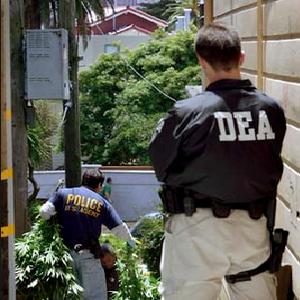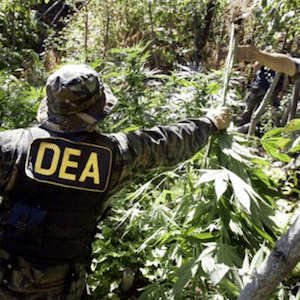 The UN General Assembly Special Session on the World Drug Problem, UNGASS 2016, wrapped up last week with what Human Rights Watch referred to as “a missed opportunity to end the war on drugs.” Rather than replacing the longstanding strategy of drug eradication through criminalization with a sensible public health approach to drug use, the Final Outcome Document—agreed to by consensus but not without considerable protest—perpetuates the prohibition policy.
The UN General Assembly Special Session on the World Drug Problem, UNGASS 2016, wrapped up last week with what Human Rights Watch referred to as “a missed opportunity to end the war on drugs.” Rather than replacing the longstanding strategy of drug eradication through criminalization with a sensible public health approach to drug use, the Final Outcome Document—agreed to by consensus but not without considerable protest—perpetuates the prohibition policy.
President Juan Manuel Santos of Colombia said last week in an interview with The Guardian, “It’s time to leave ideologies behind and embrace the evidence, and the evidence points to the need for new policies. If something is not working for more than 40 years, logic and common sense tell you that it must be changed.” President Jimmy Morales of Guatemala, in referring to the battle between US law enforcement and drug cartels that has caused so much devastation to his nation, summarized, “When two elephants fight, the grass always suffers the most.”
Sadly, the elephants, including Russia and the United States—as well as countries like China, Thailand, Iran, Saudi Arabia and Malaysia that execute individuals convicted of non-violent drug offenses—refused to budge in spite of pleas from the leadership of countries that have arguably borne the brunt of this war in societal disruption and the blood of their citizens.
The UNGASS outcome is particularly puzzling in light of a 2011 United Nations Office on Drugs and Crime (UNODC) analysis that found “illicit drugs constitute the largest income source for transnational crime, accounting for about half of transnational crime proceeds” and a UNODC pre-UNGASS briefing paper—released by Global Commission on Drug Policy member Richard Branson—recommending decriminalization of “drug use and possession for personal consumption for all drugs.”
Human Rights Watch has called the war on drugs, “A cure worse than the disease.” Even in the US, the National Center on Addiction and Substance Abuse recently opined in the NY Times, “Marijuana use should be treated as a public health problem, not a crime. Incarcerating people for using marijuana serves neither the individual’s nor the public’s interest.”
Nonetheless, the failed war on drugs continues unabated post-UNGASS 2016.
But as President Santos said, it is “insane” to perpetuate failed policies, and notwithstanding the disappointing UNGASS outcome, individual nations and smaller jurisdictions are charging ahead with decisions to chart their own saner course.
Mexico’s President Enrique Peña Nieto told UNGASS, “We, Mexicans, know all too well the range and the defects of prohibitionist and punitive policies, and of the so-called war on drugs that has prevailed for 40 years. Our country has suffered, as few have, the ill effects of organised crime tied to drug trafficking.” The day after the gathering ended, the president announced that he is sending a bill to Congress to ease personal-use cannabis possession restrictions and to legalize medical cannabis.
Colombia’s government took a giant step forward in December 2015 when it legalized cultivation, processing and exportation of medicinal-grade cannabis products. Portugal decriminalized all drugs some 15 years ago with astounding results, and Uruguay legalized marijuana in 2014 and is preparing to begin distribution through pharmacies.
In Canada, where medical cannabis is already legal and regulated by the federal government, the new health minister under Prime Minister Justin Trudeau—who won a landslide victory last October on a campaign that included his party’s promise to legalize adult-use recreational cannabis—announced last week their legislation will be ready to introduce to Parliament next spring.
In the US, where four states and the nation’s capital have already legalized adult-use recreational cannabis possession and consumption and 24 states and one territory have regulations on the books for some form of medical cannabis, at least five states will put the question of legalization to the voters this coming November. Several state legislatures are debating the issue even now.
As the shift toward a public-health focused approach to drug use moves forward via efforts like these, cannabis industry analyst and investor Anthony Wile points out that an important question remains to be answered if revamped strategies are to be effective. “Who are the individuals using or abusing drugs that constitute this problem? As individuals, who are they?” he asks. “The problem is, we don’t definitively know the answer to that,” says Wile.
Certainly agencies and organizations amass demographic information based on surveys, samplings and projections and often issue reports on the state of the ‘drug problem’ based on such estimates, but because illicit drug use is almost universally classified as criminal behavior—whether that’s use of illegal drugs or the illegal or improper use of pharmaceuticals—most users remain in the shadows.
“Even those wanting help are oftentimes reluctant to ask because of the potential for criminal repercussions. So even the most well-intentioned efforts to address problems that stem from drug use are at best a shot in the dark,” explains Anthony Wile, Chairman and CEO of Toronto-based The Wile Group Ltd.
Educational programs directed at preventing drug use, treatment programs for drug abusers and attempts to formulate prudent governmental policy will continue to be less effective, efficient and valuable than is needed, Wile believes, until specific information is known about the targets of those efforts, “until demand steps out of the shadows into the light of identification.”
Since the 1961 Global Convention on Narcotic Drugs was instituted, making drug prohibition and eradication a global priority, nearly all efforts have been directed at drug production and distribution, a policy has clearly been a failure.
Anthony Wile maintains this approach fails to address the very reason black-market cultivation and distribution exist: consumer demand. “For as many reasons as there are individuals who use drugs, people demand access to mind-altering substances. And until those reasons, and those individuals, are identified, all the money, energy and effort thrown at it will not eliminate the problems.”
One straightforward action can swiftly increase the ability to identify the individuals choosing to illegally use drugs in order to direct appropriate education and treatment programs to the people who need them, and eliminate the black market instantly, he says. “Decriminalize, legalize and regulate drugs.”
“Demand cannot be regulated away,” Wile explains. “However, regulation and distribution of the substances through tightly controlled, heavily regulated legal channels will make it possible to have the open conversation needed to identify where that demand originates and to develop and implement an effective communications strategy. When acknowledgement of drug use no longer carries the threat of punishment—even capital punishment in some places—individuals will not need to hide from available help because of fear of identification.”
“Such a policy in no way normalizes or encourages drug use,” he emphasizes. “It simply acknowledges reality: demand exists, and an appropriate response requires identification of the consumers creating that demand. It’s about getting to know the individuals who comprise the general demand.”
When asked how knowing more specific information about drug users will enable educational and treatment programs to be more effective, Anthony Wile suggested that given our ever-advancing technology, communications strategies can specifically direct efforts where they’ll be most valuable and effective and to engage in direct communication with individuals in need. The idea is, in computer parlance, when we know the “user profile,” targeted communications can be effectively utilized to dialogue with those consumers.
Consider the ads that follow you around the Internet after clicking a link on some particular topic. Perhaps you clicked on a link to read more about precious metals only to find Peter Schiff ads “following” you online for weeks. Or you checked out an ad for a shoes sale only to be bombarded with “Buy now!” ads from purveyors of footwear you’ve never even heard of. Eventually, many people are compelled to also “learn more” about Peter or that appealing pair of shoes that keeps catching your eye.
The effectiveness of profiling users and implementing targeted drug education and/or addiction-related efforts can greatly enhance the effectiveness of the tax dollars being spent by focusing the attention of such programs where it ought to be focused – on the actual users.
Wile asks, “Would retargeted ads featuring credible information about the dangerous chemicals in ‘Spice’ or exciting results of a new treatment option for cocaine addiction lead those who can benefit to valuable information when it’s directed to those whose profiles indicate this information will be helpful for them?
“Similarly, in the offline world, would printed notices using messaging proven effective for a certain targeted community of users be more effective in helping those who need it learn of safe alternatives to black-market drug sources and opportunities for local treatment?”
Certainly targeted messaging is more effective than blanket communication thrown out at a diverse population. But until the target is identified, the messaging cannot be effectively developed. To have value, campaigns need to speak to individuals not groups, and open dialogue with individuals about personal choices, decisions and responsibility whether aiming to eradicate the black market—illegal drugs or anything else.
“As legendary economist, Ludwig von Mises made clear,” said Anthony Wile, “it is simply not possible to control an unknown marketplace, because it is not the market as a whole that makes decisions; the individuals who make up that market make individual decisions. We can only impact people’s decision making processes on an individual basis.”
If we want to end “the world drug problem,” we must identify who, what and why in order to offer effective market-driven solutions. Legalization and tightly controlled channels of regulated distribution makes that possible.









